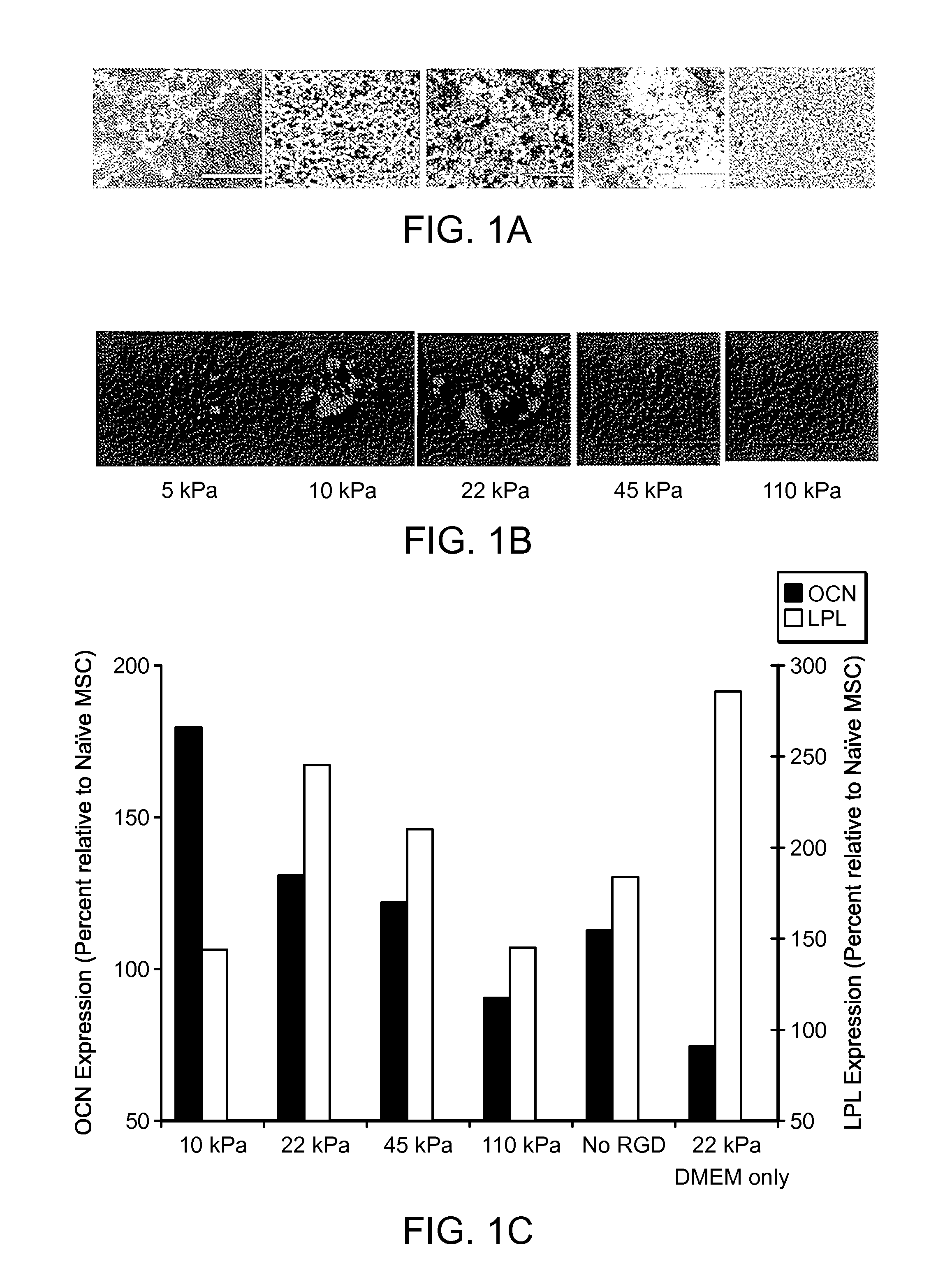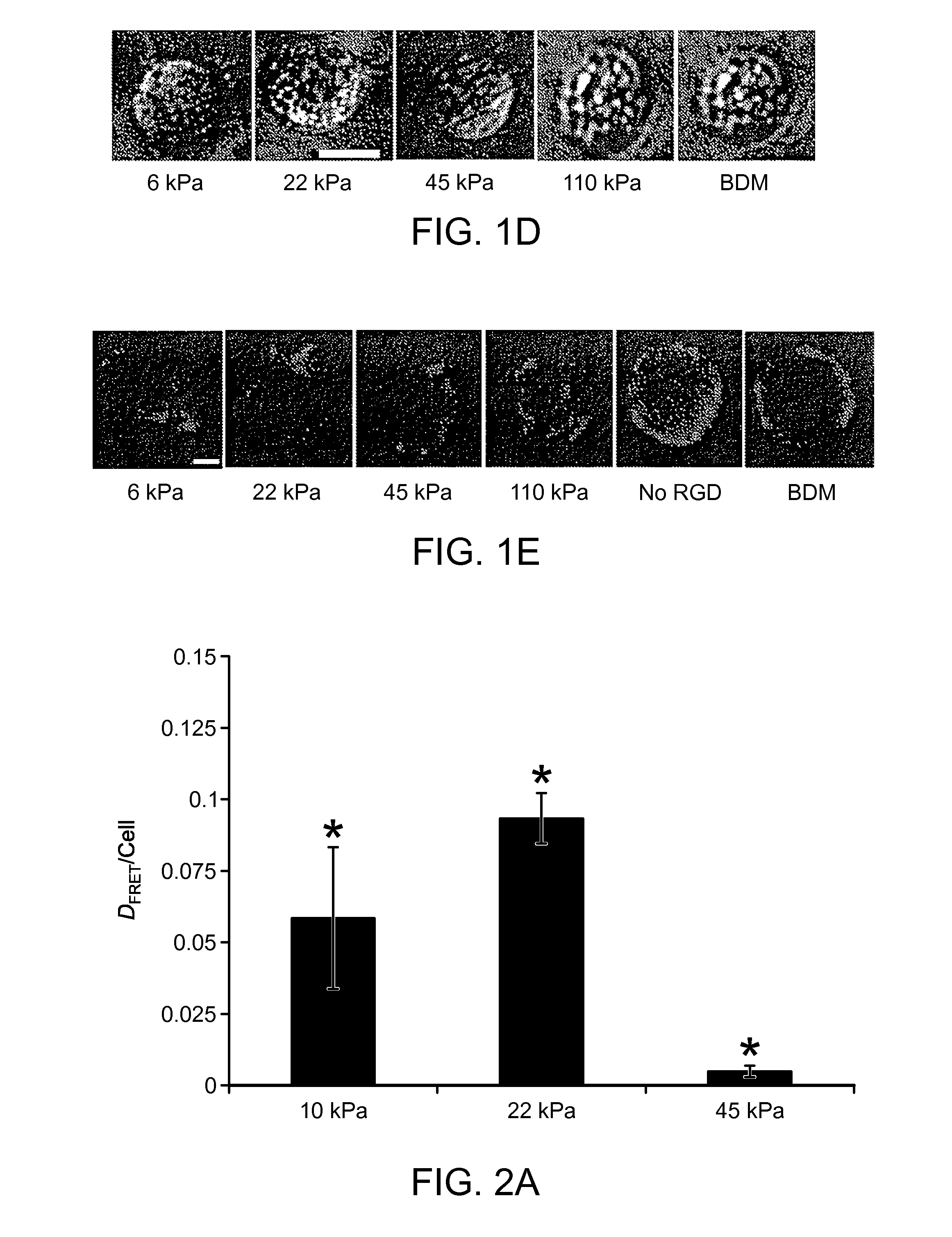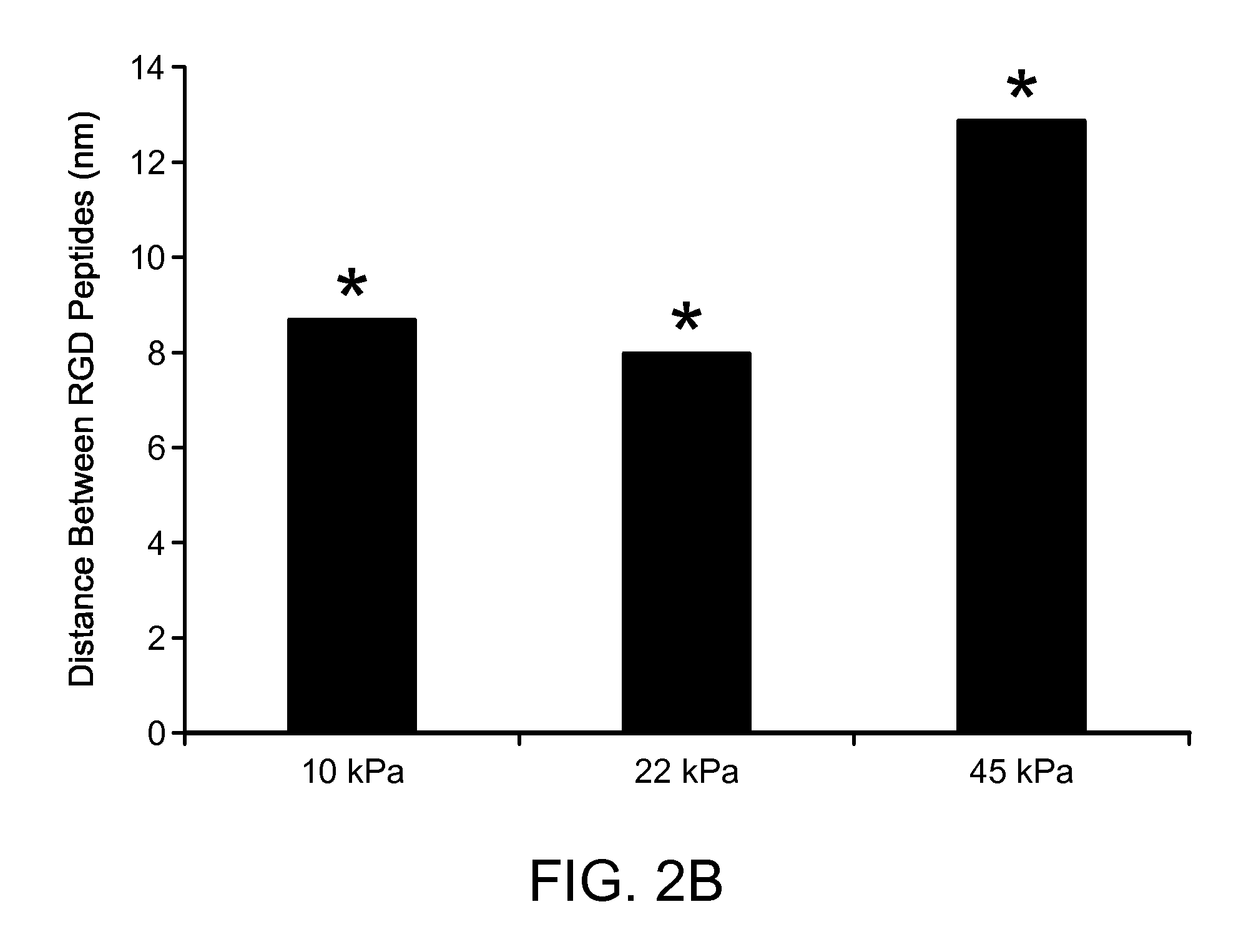Harnessing Cell Dynamics to Engineer Materials
a cell dynamics and engineering technology, applied in the field of harnessing cell dynamics to engineer materials, can solve the problem of elusive mechanism(s) by which information is conveyed
- Summary
- Abstract
- Description
- Claims
- Application Information
AI Technical Summary
Benefits of technology
Problems solved by technology
Method used
Image
Examples
example 1
Matrix Mechanics and Cell Traction Regulate Integrin-Adhesion Ligand Bond Formation by Mesenchymal Stem Cells in 3D Micro-environments
[0045]The phenotype of a variety of tissue cell types, including mesenchymal cells (MSCs), is affected to the mechanical properties of the extracellular matrix (ECM). Prior to the invention, the biophysical mechanism behind this observation was incompletely understood. As described herein, one important means for cells to sense matrix stiffness is through mechanically-dependent changes in integrin-adhesion ligand bond formation.
[0046]RGD bond formation was evalusted in MSCs encapsulated into 3D alginate hydrogels modified with adhesion peptides (G4RGDASSKY) using a non-invasive FRET technique. The number of RGD-integrin bonds depended on matrix compliance in a biphasic manner that was independent of the specific type of alginate polymer or crosslinking molecule. A second FRET assay to assess the degree of matrix reorganization by cells, along with liv...
example 2
Control of Mesenchymal Stem Cell Lineage Specification and Specific Integrin Ligation by Matrix Mechanics
[0047]Hydrogels were formed by mixing RGD-modified alginate polymers with bone-marrow derived mesenchymal stem cells to a final concentration of 2x107 cells / mL and 1-5 g alginate / 100 mL. The concentration of RGD was 7.4 μmol / L, and the concentration of calcium-sulfate was varied from 6.25-50 mM to produce hydrogels. Thereafter, hydrogels were cultured in Dulbecco's Modified Eagle's Medium (DMEM) supplemented with ascorbic acid, β-glycero-phosphate and dexamethasone. After the first day incubating in medium, these gels have elastic moduli E varying from 2.5-110 kPa. Media was exchanged every other day. After one week, hydrogel disks were either fixed in paraformaldehyde for histologic analysis, or dissolved in 50 mM ethylenediaminetetraacetic acid (EDTA) in Dulbecco's Phosphate Buffered Saline (dPBS; pH 7.4) to form cell pellets, which were lysed into Trizol (for RNA extraction) o...
example 3
RGD-Modified Hydro Gels that Selectively Interact with Stem Cells Over Fibroblasts
[0050]Hydrogels were formed by mixing RGD-modified alginate polymers with bone-marrow derived mesenchymal stem cells, or NIH-3T3 fibroblasts to a final concentration of 2x107 cells / mL and 1-5 g alginate / 100 mL. The concentration of RGD was 150 nmol / L, and the concentration of calcium-sulfate was varied from 6.25-50 mM to produce hydrogels. The number of cell-RGD bonds was measured using a FRET technique. To manipulate the traction forces exerted by stem cells on the substrates, cells were serum starved for 12 hr, then immediately treated with a high concentration of serum (20 volume percent) immediately before encapsulating into alginate matrices. Cell-RGD bonds were measured 2 hr after cell encapsulation (FIGS. 4A-B).
PUM
| Property | Measurement | Unit |
|---|---|---|
| elastic modulus | aaaaa | aaaaa |
| elastic modulus | aaaaa | aaaaa |
| molecular weight | aaaaa | aaaaa |
Abstract
Description
Claims
Application Information
 Login to View More
Login to View More - R&D
- Intellectual Property
- Life Sciences
- Materials
- Tech Scout
- Unparalleled Data Quality
- Higher Quality Content
- 60% Fewer Hallucinations
Browse by: Latest US Patents, China's latest patents, Technical Efficacy Thesaurus, Application Domain, Technology Topic, Popular Technical Reports.
© 2025 PatSnap. All rights reserved.Legal|Privacy policy|Modern Slavery Act Transparency Statement|Sitemap|About US| Contact US: help@patsnap.com



